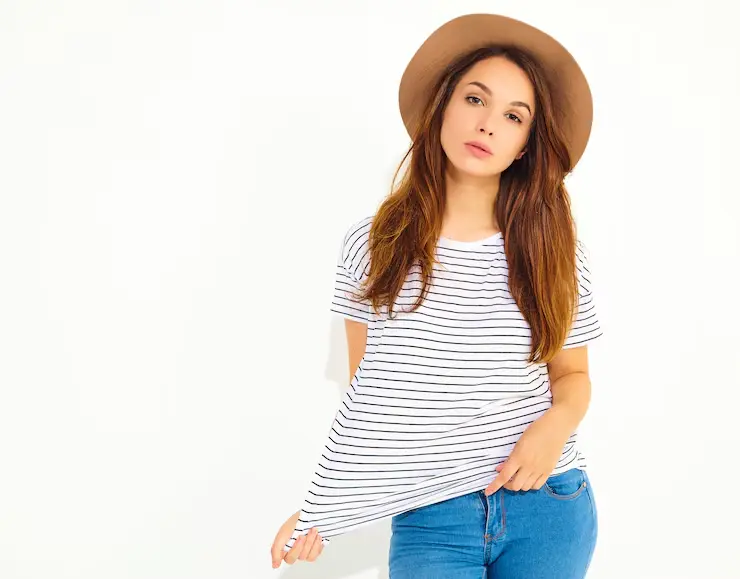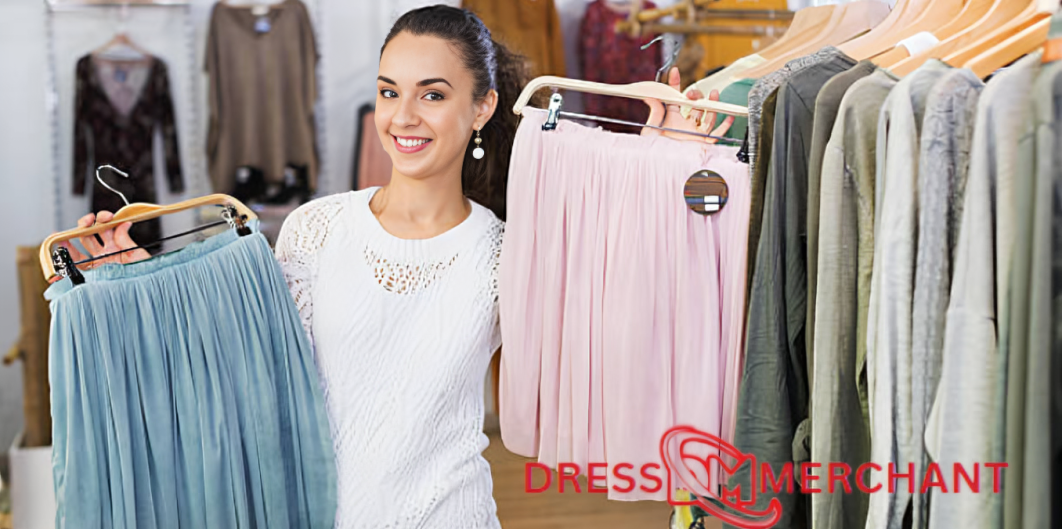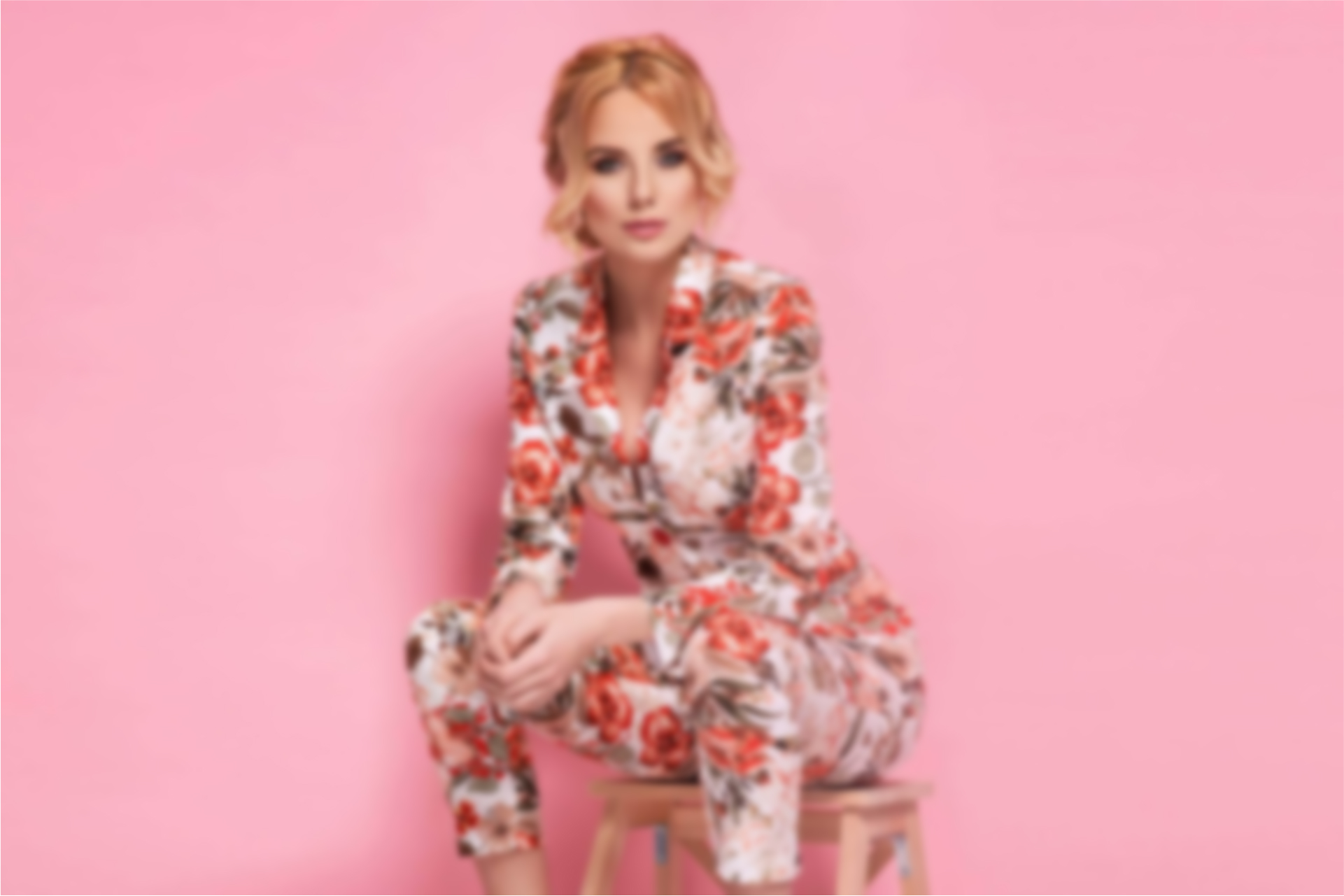Discover Sustainable Knitwear Brands For Women with Dress Merchant — your trusted apparel sourcing agent connecting you to eco-friendly, ethical knitwear manufacturers and exporters. As a leading garments buying agent, we ensure top-quality, sustainable solutions tailored for modern women’s fashion. Partner with us to source from reliable brands committed to sustainability and style.
Thank you for reading this post, don't forget to subscribe!
1. The Imperative of Conscious Fashion Choices
In an era defined by growing environmental awareness and a collective push towards more responsible consumption, the fashion industry, historically a major contributor to ecological concerns, finds itself at a pivotal juncture. Consumers are increasingly scrutinizing the origins and impact of their clothing, moving beyond fleeting trends to demand transparency and ethical practices.
This paradigm shift underscores the burgeoning importance of conscious fashion choices, where every purchase becomes an act of deliberate alignment with personal values and global well-being. The allure of fast fashion, once irresistible, is steadily waning as its hidden costs – environmental degradation, exploitative labor, and a culture of disposability – come to light. Instead, a discerning clientele is emerging, one that prioritizes longevity, quality, and a commitment to sustainability, seeking out brands that reflect these core principles.
1.1 Shifting Consumer Mindsets Towards Sustainability
The modern consumer is no longer a passive recipient of mass-produced goods. There’s a profound transformation in how individuals perceive their role in the consumption cycle, propelled by access to information and a heightened sense of social responsibility. This evolving mindset is characterized by a desire to understand the entire lifecycle of a product, from raw material sourcing to manufacturing processes and end-of-life considerations. Social media, documentaries, and investigative journalism have played a crucial role in exposing the darker facets of conventional fashion, fostering a sense of urgency and inspiring a proactive stance among shoppers. This shift is not merely a fleeting trend but a fundamental recalibration of priorities, where ethical considerations often trump purely aesthetic ones.
1.2 Unveiling the Environmental Footprint of Conventional Knitwear
Conventional knitwear, a staple in many wardrobes, often carries a significant environmental burden. The production of traditional fibers like conventional cotton and synthetic materials such as acrylic and polyester relies heavily on resource-intensive processes. Cotton cultivation, for instance, frequently involves extensive water usage and pesticide application, leading to soil degradation and water pollution.
Synthetic fibers, derived from fossil fuels, contribute to microplastic pollution when laundered and are non-biodegradable, persisting in landfills for centuries. Furthermore, the dyeing and finishing processes in conventional knitwear manufacturing often involve toxic chemicals that contaminate waterways and pose health risks to workers. Understanding this complex environmental footprint is the first step towards embracing more sustainable alternatives.
1.3 The Economic and Social Case for Ethical Production
Beyond environmental concerns, the ethical dimension of fashion production, particularly in knitwear, is equally compelling. The pursuit of ever-lower prices in the fast fashion model frequently leads to exploitative labor practices in developing countries. Workers in these supply chains may face inadequate wages, unsafe working conditions, and excessive hours, often without basic human rights protections.
Conversely, ethical production prioritizes fair wages, safe environments, and respect for human rights throughout the supply chain. Investing in brands that adhere to these principles not only supports dignified livelihoods but also fosters stronger, more resilient communities. The economic ripple effect of ethical sourcing can empower local economies and contribute to a more equitable global trade system.
2. Defining Sustainable Knitwear: More Than Just a Buzzword
The term “sustainable” can be broadly interpreted, often leading to confusion and, at times, “greenwashing” by brands eager to capitalize on consumer interest without making genuine changes. In the context of knitwear, true sustainability encompasses a multifaceted approach, extending far beyond simply using a natural fiber.
It involves a holistic consideration of the entire product lifecycle, from the responsible sourcing of raw materials to the manufacturing processes, the longevity of the garment, and its eventual end-of-life disposal or recycling. It’s about minimizing negative impacts at every stage and, wherever possible, creating positive social and environmental outcomes. This comprehensive definition ensures that claims of sustainability are backed by tangible, verifiable practices.
2.1 Exploring Eco-Friendly Fibers and Their Attributes
The foundation of sustainable knitwear lies in the choice of fibers. While traditional options present challenges, a growing array of eco-friendly alternatives offers compelling solutions. Organic cotton, cultivated without harmful pesticides or synthetic fertilizers, reduces water pollution and promotes soil health. Recycled fibers, such as recycled cotton, wool, or even polyester derived from post-consumer waste, divert materials from landfills and conserve virgin resources. Innovative natural fibers like Tencel Lyocell, derived from sustainably managed wood pulp using a closed-loop system, minimize water and chemical usage. Hemp and linen, known for their durability and minimal resource requirements, are also gaining traction. Each fiber possesses unique attributes in terms of feel, durability, and environmental impact, offering a diverse palette for sustainable knitwear designers.
2.2 Innovations in Production Techniques and Energy Efficiency
Beyond raw materials, the methods used to transform fibers into finished garments play a critical role in determining sustainability. Progressive knitwear brands are embracing innovative production techniques that significantly reduce environmental footprints. Low-impact dyeing methods, which utilize natural dyes or advanced technologies to minimize water and chemical consumption, are becoming more prevalent.
Waterless dyeing processes are also emerging as a revolutionary step towards conservation. Furthermore, investing in energy-efficient machinery and renewable energy sources for manufacturing facilities dramatically reduces carbon emissions. Some brands are even exploring “zero-waste” knitting techniques, where garments are knitted to shape, eliminating fabric scraps and minimizing material waste.
2.3 The Importance of Circularity and Longevity
True sustainability in knitwear extends to the end of the garment’s life. The concept of circularity, where materials are kept in use for as long as possible and then re-entered into the production cycle, is gaining traction. This involves designing for durability, enabling repairs, and facilitating easy recycling or composting at the end of the garment’s useful life.
Longevity is a key pillar of this approach; a well-made, timeless knitwear piece that can be worn for years reduces the need for frequent replacements, thereby lessening overall consumption. Brands committed to circularity often offer repair services, take-back programs, or provide clear instructions for responsible disposal, ensuring their products have a minimal environmental impact throughout their entire existence.
3. Leading the Way: Trailblazing Sustainable Knitwear Brands
The landscape of sustainable fashion is continuously evolving, with an increasing number of brands dedicating themselves to ethical and environmentally conscious practices. Within the knitwear sector, a cohort of pioneering brands is setting new benchmarks, proving that style and sustainability can coexist harmoniously.
These brands are not merely paying lip service to environmentalism; they are embedding sustainable principles into every facet of their operations, from the sourcing of their fibers to their manufacturing processes and their commitment to fair labor. Their dedication provides a beacon of hope and offers consumers genuine alternatives to conventional knitwear, demonstrating that fashion can be both beautiful and responsible.
3.1 Brands Prioritizing Organic and Recycled Fibers
A significant number of leading sustainable knitwear brands distinguish themselves through their unwavering commitment to utilizing organic and recycled fibers. They understand that the choice of raw material forms the bedrock of a truly sustainable product. These brands meticulously source GOTS-certified organic cotton, ensuring no harmful pesticides or synthetic fertilizers are used in its cultivation, thereby protecting soil health and water quality.
Similarly, they actively incorporate recycled wool, cashmere, and even synthetic materials like recycled polyester, diverting textile waste from landfills and reducing the demand for virgin resources. Their dedication to these fibers reflects a deep understanding of the environmental impact of material production and a proactive approach to minimizing it.
3.2 Brands Championing Transparency and Ethical Labor
Beyond environmental considerations, a hallmark of truly sustainable knitwear brands is their unwavering commitment to transparency and ethical labor practices. These brands recognize that sustainability encompasses the well-being of the people involved in their supply chains. They provide clear, verifiable information about their manufacturing facilities, often detailing working conditions, wages, and employee benefits.
Many collaborate with certifications like Fair Trade or SA8000, which independently audit social responsibility standards. By prioritizing ethical labor, these brands ensure that the hands crafting their beautiful knitwear are treated with dignity and respect, fostering a supply chain built on fairness and human rights, a stark contrast to the often opaque practices of conventional fashion.
3.3 Brands Embracing Innovative and Low-Impact Production
Innovation is at the heart of many leading sustainable knitwear brands, particularly concerning their production techniques. They are actively investing in and implementing cutting-edge methods to minimize their environmental footprint. This includes utilizing advanced knitting technologies that reduce waste, such as whole-garment knitting, where entire sweaters are produced in one seamless piece.
Many also employ low-impact dyeing processes, which significantly reduce water consumption and eliminate toxic chemicals, opting for natural dyes or closed-loop systems. Furthermore, some brands are powered by renewable energy sources in their factories, further reducing their carbon emissions. Their commitment to these pioneering approaches demonstrates a forward-thinking mindset aimed at pushing the boundaries of sustainable manufacturing.
4. The Craftsmanship of Conscious Creation
In the realm of sustainable knitwear, the concept of craftsmanship takes on an elevated meaning. It transcends mere technical skill, encompassing a profound respect for materials, an unwavering commitment to quality, and a deep understanding of the garment’s journey from conception to completion.
This conscious approach to creation prioritizes longevity and timeless design over fleeting trends, recognizing that a well-made, durable piece of knitwear is inherently more sustainable. It’s about meticulous attention to detail, from the selection of the finest eco-friendly fibers to the precise execution of knitting techniques, ensuring that each garment is not only beautiful but also built to last, resisting the disposability that plagues much of the modern fashion industry.
4.1 The Art of Fiber Selection and Yarn Spinning
The journey of sustainable knitwear begins with the deliberate and thoughtful selection of fibers. This is an art form in itself, requiring an in-depth knowledge of various natural and recycled materials, their unique properties, and their environmental impact. Expert artisans carefully choose fibers like organic merino wool for its warmth and breathability, Tencel for its silky drape, or recycled cashmere for its luxurious feel and reduced resource consumption.
Following fiber selection, the yarn spinning process is critical. Sustainable brands often work with mills that employ environmentally responsible practices, minimizing water and energy usage during spinning, and ensuring that no harmful chemicals are introduced. The quality of the spun yarn directly influences the final garment’s feel, durability, and drape.
4.2 Precision Knitting Techniques for Durability
Once the eco-friendly yarn is prepared, the knitting process itself demands precision and expertise to ensure the garment’s longevity. Sustainable knitwear brands often utilize advanced knitting machines that can create complex patterns and seamless garments, reducing waste and enhancing durability.
Techniques like full-fashioned knitting, where garment pieces are shaped on the machine rather than cut from fabric, minimize textile waste and create a stronger, more resilient finished product. Attention to tension, stitch consistency, and seam finishing are paramount, as these details contribute significantly to the garment’s ability to withstand repeated wear and washing. This meticulous approach ensures that each piece is not only aesthetically pleasing but also a long-lasting investment.
4.3 The Timelessness of Sustainable Design
A core tenet of conscious creation in knitwear is the pursuit of timeless design. Unlike fast fashion, which thrives on rapid trend cycles, sustainable brands focus on creating pieces that transcend seasonal fads and remain relevant for years to come. This involves clean lines, classic silhouettes, and versatile colors that can be easily integrated into various wardrobes and styled in numerous ways.
The emphasis is on quality over quantity, encouraging consumers to invest in fewer, better-made items that they will cherish and wear for a long time. This approach not only reduces overall consumption but also fosters a deeper appreciation for the artistry and craftsmanship embedded in each garment.
5. Beyond the Hype: Certifications and Verifications
In an increasingly crowded market of “green” claims, distinguishing genuinely sustainable knitwear brands from those engaging in greenwashing can be a challenge for consumers. This is where independent certifications and verifications play a crucial role. These third-party accreditations provide a robust framework for assessing a brand’s environmental and social performance, offering transparency and accountability that individual claims often lack.
By relying on established standards and rigorous auditing processes, certifications offer consumers peace of mind, assuring them that a brand’s sustainable pledges are backed by verifiable practices. They serve as a vital tool for informed purchasing decisions, allowing consumers to support brands that truly align with their values.
5.1 Understanding Global Organic Textile Standard (GOTS)
The Global Organic Textile Standard (GOTS) is arguably the most comprehensive and widely recognized certification for organic textiles, including those used in knitwear. GOTS certification goes beyond simply verifying that fibers are organically grown; it covers the entire supply chain, from harvesting of raw materials, through environmentally and socially responsible manufacturing, to labeling.
This means strict ecological and toxicological criteria must be met at every stage of production, including restrictions on harmful dyes and chemicals. Furthermore, GOTS mandates adherence to social criteria, ensuring fair labor practices throughout the manufacturing process. For consumers, seeing the GOTS label on knitwear provides a strong assurance of both environmental and social responsibility.
5.2 Exploring Fair Trade and Its Impact on Communities
Fair Trade certification is primarily focused on social justice and economic empowerment within the supply chain. While not exclusively tied to organic materials, Fair Trade Certified knitwear ensures that producers receive fair wages and work in safe conditions, preventing exploitation and promoting sustainable livelihoods in developing countries. It fosters transparency, direct trade relationships, and community development initiatives.
For knitwear, this means that the farmers growing the cotton or the workers spinning the yarn and knitting the garments are treated ethically and receive a fair share of the profits. Supporting Fair Trade knitwear empowers communities, contributes to poverty reduction, and encourages sustainable economic growth in regions often vulnerable to exploitation.
5.3 Other Key Certifications and Their Specific Focus
Beyond GOTS and Fair Trade, several other important certifications offer specific assurances within the sustainable textile industry. The OEKO-TEX Standard 100, for instance, focuses on the safety of textiles and textile products from harmful substances. It ensures that every component, from the thread to the buttons, has been tested for harmful substances and is harmless to human health.
The Responsible Wool Standard (RWS) is another crucial certification for wool knitwear, addressing animal welfare and land management practices at sheep farms, ensuring wool is sourced responsibly. Bluesign is a comprehensive standard that ensures environmentally friendly and safe production processes throughout the textile supply chain. Understanding the focus of these various certifications allows consumers to make more nuanced and informed choices based on their specific priorities.
6. The Investment in Lasting Style: Cost vs. Value
When considering sustainable knitwear, the initial sticker price can sometimes appear higher than that of fast fashion alternatives. This perceived difference often leads to a misconception about the overall value proposition. However, viewing sustainable knitwear through the lens of long-term investment rather than short-term expenditure reveals a distinct advantage.
The true cost of an item encompasses not just its purchase price but also its durability, longevity, and environmental impact over its entire lifespan. Sustainable knitwear, crafted with superior materials and ethical practices, offers a compelling economic and environmental argument for its slightly higher upfront cost, proving to be a wise investment in lasting style and responsible consumption.
6.1 Understanding the True Cost of Fast Fashion
The seemingly low prices of fast fashion knitwear are often achieved at a hidden cost. These costs are externalized, meaning they are borne by the environment and exploited labor, rather than being reflected in the product’s price. The use of cheap, low-quality materials leads to garments that quickly degrade, pill, or lose their shape, necessitating frequent replacements.
This cycle of continuous consumption fuels overproduction and contributes significantly to landfill waste. Furthermore, the reliance on unethical labor practices, underpaid workers, and unsafe factories allows fast fashion brands to cut production costs, making their products appear inexpensive. The true cost of fast fashion is ultimately paid by the planet and vulnerable communities.
6.2 The Durability and Longevity of Sustainable Knitwear
In stark contrast, sustainable knitwear is designed and produced with durability and longevity as core principles. Brands prioritize high-quality, often natural or recycled, fibers that are inherently more resilient and resistant to wear and tear. The meticulous craftsmanship, including strong seams, well-finished edges, and precise knitting techniques, ensures that garments maintain their shape and integrity even after repeated wear and washing.
This commitment to quality means that a sustainable knitwear piece can be a cherished part of a wardrobe for many years, even decades. This extended lifespan significantly reduces the need for frequent replacements, leading to long-term savings and a smaller environmental footprint compared to disposable fast fashion.
6.3 Calculating Cost Per Wear: A Smart Consumer Metric
A highly effective metric for evaluating the true value of clothing, particularly sustainable knitwear, is “cost per wear.” This calculation involves dividing the purchase price of an item by the number of times it is worn. While a fast fashion sweater might cost $20 but only be worn 5 times before falling apart, resulting in a cost per wear of $4, a sustainable knitwear piece costing $150 that is worn 100 times over several years has a cost per wear of just $1.50.
This simple calculation dramatically illustrates the economic advantage of investing in high-quality, durable garments. It shifts the focus from initial price to the long-term utility and value derived from a well-made, sustainable product, encouraging more mindful purchasing habits.
7. Caring for Your Sustainable Knits: Maximizing Longevity
Investing in high-quality, sustainable knitwear is a conscious choice, and extending the life of these beautiful garments through proper care is equally important. While sustainable knits are often designed for durability, their natural fibers and delicate constructions require thoughtful handling to maintain their integrity, shape, and luxurious feel.
Proper care not only preserves the garment’s aesthetic appeal but also reinforces the principles of sustainability by maximizing its longevity and reducing the need for premature replacement. Understanding the specific needs of different fibers and adopting best practices in washing, drying, and storage can significantly impact how long your cherished knitwear remains a staple in your wardrobe.
7.1 Understanding Fiber-Specific Washing Instructions
Different natural and recycled fibers used in sustainable knitwear require specific washing instructions to prevent damage and maintain their quality. Wool, including merino and cashmere, often benefits from hand washing in cool water with a gentle, wool-specific detergent, or a delicate cycle on a machine. Agitation and hot water can cause shrinking and felting.
Cotton knits are generally more robust and can be machine washed on a gentle cycle with cold water to prevent shrinking and fading. Tencel and other cellulosic fibers require a delicate touch to prevent stretching or damage to the fibers. Always consult the care label provided by the brand, as they offer the most accurate guidance based on the garment’s specific blend and construction.
7.2 The Art of Drying and Preventing Stretching
Proper drying is crucial for knitwear, as improper methods can lead to stretching, shrinking, or loss of shape. The golden rule for most knitwear, especially wools and delicate blends, is to lay them flat to dry. This prevents the weight of the water from pulling the garment out of shape. Avoid hanging wet knits, as this can cause stretching at the shoulders and hemline.
Tumble drying, especially on high heat, should generally be avoided for most natural fibers as it can cause significant shrinkage and damage. If machine drying is absolutely necessary for specific blends (check the label), use the lowest heat setting and remove the garment while still slightly damp. Air circulation is key for effective and safe flat drying.
7.3 Smart Storage Solutions for Knitwear Preservation
How you store your knitwear plays a significant role in its long-term preservation. To prevent stretching and distortion, knitwear should ideally be folded rather than hung on hangers, particularly heavier items. Store them in drawers or on shelves, away from direct sunlight which can cause fading. For delicate items like cashmere or fine merino, consider storing them in breathable fabric bags to protect them from dust and moths.
Cedar balls or sachets are natural repellents against pests and can be placed in drawers or storage areas. Ensure knitwear is completely clean and dry before storing for extended periods, as residual moisture can lead to mildew or attract pests. Proper storage safeguards your investment and ensures your knits are ready to wear season after season.
8. Styling Sustainable Knitwear: Versatility and Impact
Sustainable knitwear, with its emphasis on quality, timeless design, and natural fibers, offers unparalleled versatility in styling. Far from being limited to a single aesthetic, these pieces are designed to be integrated seamlessly into diverse wardrobes, adapting to various occasions and personal styles. Their inherent quality and thoughtful construction mean they drape beautifully and maintain their shape, elevating any ensemble.
Styling sustainable knitwear is not just about fashion; it’s about making a statement about conscious consumption, demonstrating that ethical choices can be synonymous with sophisticated and impactful personal expression. It’s about building a versatile wardrobe that reflects both individual taste and a commitment to a better future.
8.1 Elevating Everyday Looks with Quality Knits
Sustainable knitwear has the power to instantly elevate everyday looks, transforming casual outfits into chic ensembles. A beautifully crafted cashmere or merino wool sweater can be paired with jeans and sneakers for an effortlessly elegant weekend look, or layered over a crisp white shirt for a smart-casual office outfit. A finely knit cardigan adds warmth and sophistication to a simple t-shirt and trousers.
The luxurious feel and superior drape of sustainable fibers instantly convey a sense of quality and considered style, making even the most basic combinations feel polished. These pieces become versatile staples that can be dressed up or down, offering endless styling possibilities for daily wear.
8.2 Transitional Dressing and Layering Techniques
The inherent versatility of sustainable knitwear makes it ideal for transitional dressing, allowing seamless movement between seasons and varying temperatures. Lightweight cotton or linen knits are perfect for cool summer evenings or early autumn days, offering just enough warmth without being too heavy. As temperatures drop, heavier wool or cashmere sweaters become essential, providing cozy comfort.
The key lies in strategic layering. A fine-gauge merino turtleneck can be worn under a blazer for a professional look, while an oversized chunky knit can be layered over a dress or skirt for a relaxed yet stylish outfit. These layering techniques extend the wearability of each piece throughout the year, maximizing your investment.
8.3 Creating a Capsule Wardrobe with Sustainable Essentials
Sustainable knitwear is a cornerstone for building a truly effective and impactful capsule wardrobe. The concept of a capsule wardrobe revolves around a curated collection of versatile, high-quality pieces that can be mixed and matched to create numerous outfits, minimizing the need for excessive consumption.
By investing in a few well-chosen sustainable knitwear pieces – perhaps a classic crew neck sweater, a versatile cardigan, and a comfortable knit dress – you lay the foundation for a cohesive and adaptable wardrobe. These timeless pieces, built to last, reduce decision fatigue, minimize waste, and ensure you always have stylish, appropriate options for any occasion, embodying the core principles of mindful fashion.
9. The Future of Knitwear: Innovation and Inclusivity
The trajectory of sustainable knitwear is one of continuous evolution, driven by relentless innovation and an increasing commitment to inclusivity. As technology advances and consumer demands shift, the industry is poised for transformative changes, pushing the boundaries of what’s possible in ethical and environmentally responsible fashion.
The future promises even more revolutionary materials, smarter production processes, and a broader embrace of diversity in sizing, design, and accessibility. This forward momentum indicates a vibrant and dynamic future for knitwear, one that is deeply intertwined with technological breakthroughs and a global push for more equitable and sustainable practices across the entire textile value chain.
9.1 Emerging Technologies in Sustainable Production
The horizon of sustainable knitwear is illuminated by an array of emerging technologies that promise to further revolutionize production processes. Advances in bio-based and lab-grown fibers, which offer sustainable alternatives without relying on traditional agricultural or fossil fuel resources, are gaining traction. Innovations in 3D knitting and additive manufacturing techniques allow for highly customized, on-demand production with virtually zero waste, moving towards a truly circular model. Digital textile printing reduces water and dye usage significantly.
Furthermore, AI and machine learning are being utilized to optimize supply chains, predict demand, and minimize overproduction, thereby reducing waste and energy consumption across the board.
9.2 The Rise of Regenerative Agriculture and Fiber Sourcing
Beyond simply reducing harm, the future of sustainable knitwear is increasingly looking towards regenerative agriculture as a source of raw materials. Regenerative farming practices focus on rebuilding soil organic matter and restoring degraded soil biodiversity, leading to healthier ecosystems, improved water retention, and increased carbon sequestration.
This approach goes beyond organic, aiming to actively improve the environment rather than just minimizing negative impact. Brands are beginning to partner with farms that practice regenerative grazing for wool or cultivate cotton using these methods, ensuring that their fibers contribute to a positive environmental impact, fostering a truly restorative fashion cycle.
9.3 Inclusivity and Accessibility in Sustainable Design
The future of knitwear is also fundamentally tied to inclusivity and accessibility, moving beyond a narrow definition of beauty and body type. Sustainable brands are increasingly recognizing the importance of offering a wider range of sizes, catering to diverse body shapes, and designing pieces that are comfortable and flattering for everyone.
This extends to considering adaptive designs for individuals with disabilities and ensuring that ethical fashion is not just for a select few but accessible to a broader audience. The emphasis is on creating a fashion landscape where sustainability is intertwined with genuine representation and universal appeal, making conscious choices available and appealing to all.
10. Making a Difference: Your Role as a Conscious Consumer
The power to shape the future of fashion, particularly within the knitwear sector, ultimately lies with the conscious consumer. Every purchasing decision is a vote for the kind of industry you wish to support. By actively seeking out and investing in sustainable knitwear brands, you become an integral part of a growing movement that champions ethical production, environmental responsibility, and timeless quality.
Your choices send a clear message to the market, indicating a demand for transparency, fair labor, and eco-friendly practices. This collective influence can drive significant change, encouraging more brands to adopt sustainable models and ultimately contributing to a more responsible and equitable fashion ecosystem.
10.1 Researching and Vetting Sustainable Brands
Becoming a truly conscious consumer of knitwear requires proactive research and vetting of brands. Don’t simply rely on vague “eco-friendly” claims. Take the time to visit brand websites, look for detailed information about their sourcing, manufacturing processes, and labor practices. Scrutinize their transparency reports and annual sustainability initiatives.
Look for certifications discussed earlier, such as GOTS, Fair Trade, OEKO-TEX, or RWS, as these provide independent verification of their claims. Reading reviews and articles from reputable sustainable fashion publications can also offer valuable insights into a brand’s true commitment. Your diligent research empowers you to make genuinely informed decisions.
10.2 Supporting Certifications and Ethical Initiatives
Beyond direct brand vetting, actively supporting and advocating for credible certifications and ethical initiatives can amplify your impact. Understand what each certification signifies and prioritize brands that have gone through these rigorous verification processes. Engaging with organizations that promote fair labor, environmental protection, and circular economy principles in fashion can also strengthen the movement.
By demanding certified products and vocalizing your support for these standards, you encourage more brands to adopt them, thereby raising the bar for sustainability across the entire industry. Your advocacy reinforces the importance of verifiable ethical practices.
10.3 Embracing a “Less But Better” Philosophy
Perhaps the most impactful action a conscious consumer can take is to embrace a “less but better” philosophy when it comes to their wardrobe. Instead of succumbing to the allure of fast fashion’s fleeting trends and disposable garments, invest in fewer, higher-quality, and sustainably made knitwear pieces. Prioritize versatile, timeless designs that you will truly love and wear for years.
This mindset shift reduces overall consumption, minimizes waste, and maximizes the utility and value of each item in your wardrobe. It’s about building a curated collection that reflects your values, lasts longer, and ultimately contributes to a more sustainable and meaningful relationship with your clothes.
Conclusion: Sustainable Knitwear Brands For Women
In today’s fashion landscape, the demand for sustainable knitwear brands for women is more than just a trend—it’s a movement toward ethical responsibility, environmental consciousness, and long-term value. Women around the world are increasingly choosing brands that prioritize eco-friendly materials, transparent supply chains, and fair labor practices. At Dress Merchant, we proudly support this shift by connecting global apparel retailers with ethically focused manufacturers who are committed to sustainable knitwear production.
As a trusted sourcing agent for garments and apparel exporters, Dress Merchant ensures that our partners gain access to certified, high-quality knitwear collections that align with their values and business goals. Whether you’re looking to expand your brand’s sustainable product line or seeking reliable suppliers with a green footprint, we stand ready to guide your sourcing journey with integrity, efficiency, and expertise. Choosing sustainability isn’t just good for the planet—it’s a smart and forward-thinking investment for fashion’s future.













